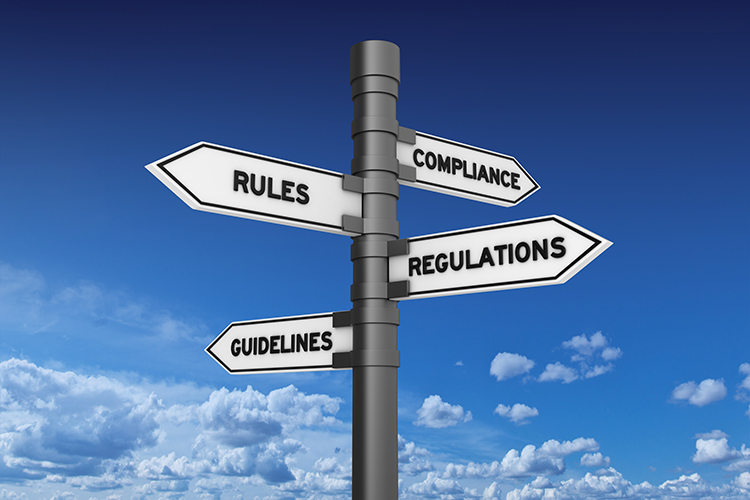Cyber & Data
The world is undergoing a digital transformation at an unprecedented scale. Many factors in confluence are driving this transformation; exponential technologies such as cloud computing and AI coupled with an explosion of data arising from billions of smart devices connected to the INTERNET, targeting both industrial and retail consumers. Faster network technologies bring the need to foster better carbon footprints in the next decade. For the insurance industry this presents both opportunity and risk.
In parallel, the insurance industry is undergoing transformational change based on a data driven underwriting approach. This presents opportunity for more premium, a better claims experience for customers, more accurate analytics and modelling, plus new correlated solutions for emerging risks such as cyber, climate change and pandemic. The risk is around the cyber integrity and data integrity of the increased digitization across all business sectors. Cyber, a systemic and accumulative risk, needs strong mitigation understanding before underwriting the risk to ensure there is a body of immutable evidence available to the industry should there be an event of significant proportion. How the insurance industry handles this mitigation and risk management moving forward is key to a successful cyber line of business cover relevant to the digital trend.
Our content explores a sound underpinning of data integrity, machine and device integrity in the cloud coupled with compliance across the board in order to reach the required level of cyber integrity required to protect customers from both accidental or malicious cyber events. This leads to a new cyber insurance marketplace and parametric insurance opportunities.
Once there is defensible data integrity with proven provenance this can be used for competitive advantage as data becomes a tangible asset on the balance sheet and can truly differentiate companies in a measurable way catalysed by the rise of AI and machine learning. This leads industry to use data analytics in a predictive fashion and not just based on historical probabilities and this will have a profound competitive aspect across the verticals and in the ESG, IP and Crypto sectors especially as intangible digital assets become the dominant assets of corporations and provide new investment portfolio opportunities with higher returns.
The world is undergoing a digital transformation at an unprecedented scale. Many factors in confluence are driving this transformation; exponential technologies such as cloud computing and AI coupled with an explosion of data arising from billions of smart devices connected to the INTERNET, targeting both industrial and retail consumers. Faster network technologies bring the need to foster better carbon footprints in the next decade. For the insurance industry this presents both opportunity and risk.
In parallel, the insurance industry is undergoing transformational change based on a data driven underwriting approach. This presents opportunity for more premium, a better claims experience for customers, more accurate analytics and modelling, plus new correlated solutions for emerging risks such as cyber, climate change and pandemic. The risk is around the cyber integrity and data integrity of the increased digitization across all business sectors. Cyber, a systemic and accumulative risk, needs strong mitigation understanding before underwriting the risk to ensure there is a body of immutable evidence available to the industry should there be an event of significant proportion. How the insurance industry handles this mitigation and risk management moving forward is key to a successful cyber line of business cover relevant to the digital trend.
Our content explores a sound underpinning of data integrity, machine and device integrity in the cloud coupled with compliance across the board in order to reach the required level of cyber integrity required to protect customers from both accidental or malicious cyber events. This leads to a new cyber insurance marketplace and parametric insurance opportunities.
Once there is defensible data integrity with proven provenance this can be used for competitive advantage as data becomes a tangible asset on the balance sheet and can truly differentiate companies in a measurable way catalysed by the rise of AI and machine learning. This leads industry to use data analytics in a predictive fashion and not just based on historical probabilities and this will have a profound competitive aspect across the verticals and in the ESG, IP and Crypto sectors especially as intangible digital assets become the dominant assets of corporations and provide new investment portfolio opportunities with higher returns.
Economics
The insurance industry has long relied on modeling as a fundamental means to drive decisions on products, pricing and markets as well as to determine capital requirements and provisions. This content focuses on applying quantitative modeling at the intersection of economics and risk management, by quantifying risk exposures, prioritizing targets for risk transfer, and maximizing alignment between insurance programs and risk reduction. Areas of focus includes bespoke risk assessment models that serve as the basis of tail-risk mitigation programs such as political risk insurance; machine-learning models quantifying the relationship between a community’s insurance protection gap and the speed of its recovery post-extreme weather events; and the development of analytical frameworks and indices to quantify and forecast the granular impact of GDP and inflation metrics on individual P&C lines underlying growth, replacement costs and performance
The insurance industry has long relied on modeling as a fundamental means to drive decisions on products, pricing and markets as well as to determine capital requirements and provisions. This content focuses on applying quantitative modeling at the intersection of economics and risk management, by quantifying risk exposures, prioritizing targets for risk transfer, and maximizing alignment between insurance programs and risk reduction. Areas of focus includes bespoke risk assessment models that serve as the basis of tail-risk mitigation programs such as political risk insurance; machine-learning models quantifying the relationship between a community’s insurance protection gap and the speed of its recovery post-extreme weather events; and the development of analytical frameworks and indices to quantify and forecast the granular impact of GDP and inflation metrics on individual P&C lines underlying growth, replacement costs and performance
Innovation
Ninety-five percent of respondents to the IIS 2020 Global Concerns Survey identified innovation as important to their organization’s success, yet only 35% had active, comprehensive plans to do so. Our innovation insights focus on stress-testing the efforts of the 35% with active programs and accelerating the 65% who lag. Our thesis is that innovation incrementalism is not enough to sustain competitive advantage, much less overtake existing leaders. Instead, real gains depend on harnessing the disruptive forces overwhelming business as usual, such as exponential improvements in technology, transition opportunities and risks due to climate and other ESG drivers, and material shifts in customer demographics, preferences and needs.
Ninety-five percent of respondents to the IIS 2020 Global Concerns Survey identified innovation as important to their organization’s success, yet only 35% had active, comprehensive plans to do so. Our innovation insights focus on stress-testing the efforts of the 35% with active programs and accelerating the 65% who lag. Our thesis is that innovation incrementalism is not enough to sustain competitive advantage, much less overtake existing leaders. Instead, real gains depend on harnessing the disruptive forces overwhelming business as usual, such as exponential improvements in technology, transition opportunities and risks due to climate and other ESG drivers, and material shifts in customer demographics, preferences and needs.
Life & Health Protection Gap
Populations are aging in most mature markets with mortality rates surpassing birth rates already a reality in some countries. In those same markets, life insurance and annuity sales have remained flat since the turn of the century. Governments will not be able to support social insurance programs at the same levels as in the past, so it is up to individuals to provide for their own wellbeing. This provides our industry a unique opportunity. Our content explores practical solutions aimed at increasing life insurance and annuity adoption by determining why people are not buying more insurance products, and examining ways the insurance industry can meet this gap in protection through creative products, delivery systems and service.
Populations are aging in most mature markets with mortality rates surpassing birth rates already a reality in some countries. In those same markets, life insurance and annuity sales have remained flat since the turn of the century. Governments will not be able to support social insurance programs at the same levels as in the past, so it is up to individuals to provide for their own wellbeing. This provides our industry a unique opportunity. Our content explores practical solutions aimed at increasing life insurance and annuity adoption by determining why people are not buying more insurance products, and examining ways the insurance industry can meet this gap in protection through creative products, delivery systems and service.
Regulation
The legal and regulatory environment for insurers, intermediaries and insurance capital providers is critical to the development (or not) of insurance markets. Insurance regulations must safeguard the financial integrity of insurers, ensure proper consumer protection, and allow the industry to operate efficiently and with sufficient flexibility to meet ever changing risks, consumer demands, technological developments, and other market forces. Striking the right balance between these competing goals is difficult. It requires constant evaluation and evolution of relevant legal and regulatory standards. IIS Insights on regulation will spotlight important current regulatory developments and will seek to stimulate a discussion regarding the best regulatory and industry responses to these developments.
The legal and regulatory environment for insurers, intermediaries and insurance capital providers is critical to the development (or not) of insurance markets. Insurance regulations must safeguard the financial integrity of insurers, ensure proper consumer protection, and allow the industry to operate efficiently and with sufficient flexibility to meet ever changing risks, consumer demands, technological developments, and other market forces. Striking the right balance between these competing goals is difficult. It requires constant evaluation and evolution of relevant legal and regulatory standards. IIS Insights on regulation will spotlight important current regulatory developments and will seek to stimulate a discussion regarding the best regulatory and industry responses to these developments.
Resilience & Sustainability
An ideal economy, community, business or individual will be both resilient and sustainable. Resilience is the capacity to recover from a disaster whereas sustainability is the ability to meet the needs of the present without compromising future generations. Building resilience in our economy, business and lives is dependent upon mitigating and managing the impact of risk but doing so in a sustainable way. Addressing environmental, social, and governance (ESG) challenges such as climate change and human rights issues presents an opportunity for risk managers, risk carriers, and investors in driving forward the resiliency and sustainability agendas of our stakeholders. Resilience is the future of sustainability. Our content explores practical strategies, product innovations, partnerships and delivery mechanisms to further the insurance industry's leadership role in enabling this world vision.
An ideal economy, community, business or individual will be both resilient and sustainable. Resilience is the capacity to recover from a disaster whereas sustainability is the ability to meet the needs of the present without compromising future generations. Building resilience in our economy, business and lives is dependent upon mitigating and managing the impact of risk but doing so in a sustainable way. Addressing environmental, social, and governance (ESG) challenges such as climate change and human rights issues presents an opportunity for risk managers, risk carriers, and investors in driving forward the resiliency and sustainability agendas of our stakeholders. Resilience is the future of sustainability. Our content explores practical strategies, product innovations, partnerships and delivery mechanisms to further the insurance industry's leadership role in enabling this world vision.
Talent & Leadership
The pressure on an ability to manage talent has reached new heights due to the confluence of COVID, digitization of business, socio-economic issues and lifestyle. The wave of resignations is forcing employers to gain a deeper understanding of why employees are resigning, many without lining up new jobs. We are also seeing the use of employee analytics expand significantly in order to understand what factors lead to a more engaged workforce and a workplace environment that is more appealing to employees.
Talent Management Executive Insights will focus on the following issues related to the challenges of managing talent:
The pressure on an ability to manage talent has reached new heights due to the confluence of COVID, digitization of business, socio-economic issues and lifestyle. The wave of resignations is forcing employers to gain a deeper understanding of why employees are resigning, many without lining up new jobs. We are also seeing the use of employee analytics expand significantly in order to understand what factors lead to a more engaged workforce and a workplace environment that is more appealing to employees.
Talent Management Executive Insights will focus on the following issues related to the challenges of managing talent:
- Why are employees leaving their current roles? Traditional reasons: Compensation? Health? Work-life balance? Emerging trends: are they valued by organization? Is the workplace a collaborative, trusting environment? Is there room for personal autonomy or flexibility in the workplace?
- How are employers using advanced analytical tools to track engagement and the attitudes of employees by job grade, level, geography and to build preventative strategies in order to reduce attrition?
- What types of organizations are more susceptible to attrition?
- Which characteristics make companies attractive to talent? What are the key components for a successful career? What is the companies value proposition that makes it a preferred destination for an employee and how is it promoted?
- Talent management strategy has historically been a board priority relative to CEO succession but given the changes in technology, the exiting of employees from the work force, more emphasis on work-life balance and diversity, boards are placing a discrete lens on talent management strategy. We will explore how boards are now viewing talent management strategy in light of current challenges.


-mv4zhd.png)




